|
Cherry Creek Art Show 2010 Jury Review |
|

|
|
art show
juror interviews and jury reviews |
| First A Little Humor |
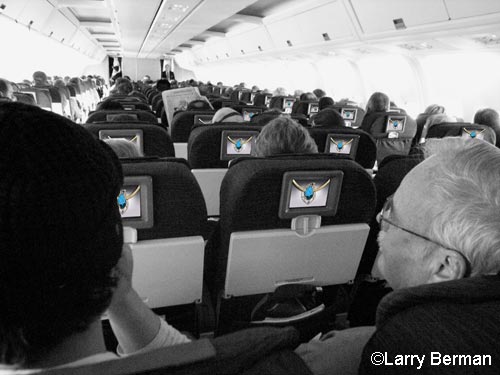
the jury flight from Chicago to Denver
check out the bored juror reading a newspaper |
| Donate to
BermanGraphics |
| The Process |
| There were 2251 applications for 230 spaces. Round one is silent voting on a scale of one
through seven and approximately 50% are eliminated at the end of the
round. |
| Itís not widely publicized but round one is open for
artists to attend. Space is limited so itís recommend to let them know in
advance that youíll be there. Also look for the St Louis Art Fair to open round
one to observers starting next year if Cindy Lerick gets permission from
her board. |
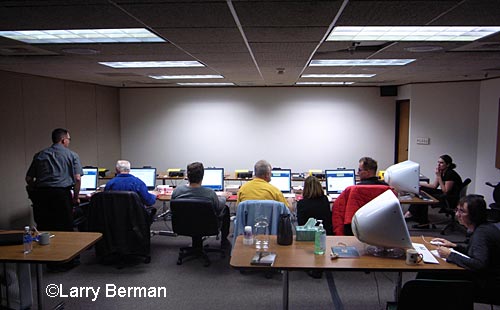
Director Terry Adams answering a juror's question |
Round Two
From a conversation with Terry Adams, ďFor round two we take away their
monitors. We then change the psychology so that theyíre voting to keep
work in the show. What theyíll be asked to do, after we preview the
category again so they see what has advanced to the next round, is I ask
for votes to keep this work in the show. It requires three of the five
jurors to vote for the work. Thatís where it creates interaction and
discussion. If only two jurors have their hands up, itís up to them to
convince another juror to support the work to advance that artist to the
next round. The interaction between the jurors in trying to convince their
colleagues to join them digs deeper into the detail of the work. Thatís
the part of the jury I enjoy because it goes back and forth and you hear
the expertise. With thirteen categories, no one juror is going to be an
expert in every category. Theyíve been selected because theyíve got a
variety of expertise.Ē |
| Donate to
BermanGraphics |
Choosing Jurors
ďWe ask our artists in our show survey to recommend names so we have an
ongoing list of potential candidates. Weíre also out there networking. I
have the opportunity to be at a number of other juries and meet jurors
from the other shows. We talk to other show directors and weíve
recommended one of the jurors on this panel to other shows. Itís our
interaction with other show directors recommending names, and we staying
in touch with each other on that. Itís important to find a balance. Weíve
got three art world professionals. We choose from museum curators, gallery
owners and professors. And then two of the five are peer artists selected
from our previous years award winners who are jury exempt so
thereís no conflict of interest because theyíre already in the show.
Theyíre the reality jurors. Theyíre out on the street and understand it.
Iím amazed at how smart these jurors are. Theyíre making very quick
decisions that hold up. Iíd venture to say that with the amount of
applicants we get for the show, we could probably select two shows of
equal quality if we had to.Ē |
Colorado Artists
ďOur board has been adamant that we donít want to create any quotas that
will affect the quality of the show.Ē |
My Observations
I arrived while the jurors were at lunch and had time to see the
projection and jurying set up before the afternoon session started. They
are using the new system of MAC Miniís connected to the projectors instead
of the Rokuís. |
| Donate to
BermanGraphics |
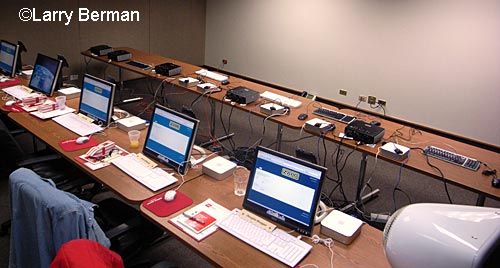
They were using two sets of MAC mini's. One connected to the monitors to
record the juror's scores and the other connected to the projectors. |
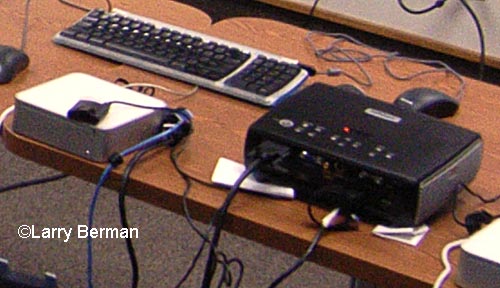
MAC Mini replaced the Roku to send images to the digital projector |
| Since I missed the morning session, I was
only able to observe a few of the thirteen categories, which included jewelry,
painting, sculpture, metal and emerging artists. They ran a three second
slide show followed by approximately a six second viewing while the jurors
scored. I asked about the timing and was told that it was ten taps of the
foot but we timed it from the back of the room and it was close to six
seconds. Artist statements were not read for round one so the scoring was
based entirely on the strength of the jury images. |
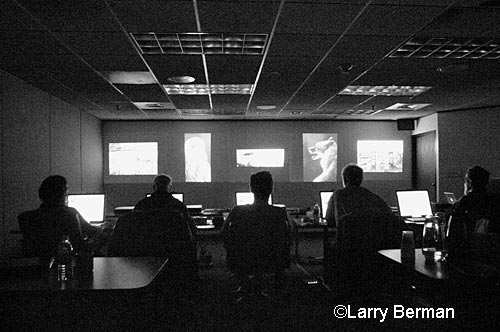 |
| The jurors were scoring on what appeared to
be 19 inch LCD monitors which, besides the projected images, were the only
light in the room. Only the number one (far left) image of each artist was
visible to the jurors on the page where the scores were entered. That
insured the jurors would look up to see the work before entering their
scores, unlike previous juries where it was reported that some jurors were
judging the work from the row of 100 pixel thumbnails on their laptops.
When I consulted with ZAPP the next day, I recommended that ZAPP change
the scoring page background color from white to light gray to make it
easier for the jurorís eyes to adjust from looking at the bright white
screen
where the scores are entered and then looking up at the projected artwork
images. In a similar way it was very difficult to see the detail in
jewelry that was photographed on white because white in a dark room can be
blinding. And if your jewelry was photographed properly and followed
jewelry photographed on white, it took a few seconds for the jurorís eyes
to adjust from the previous set of image, which in the case of Cherry Creek,
could be up to half of the six seconds. Iíve been warning artists about white
backgrounds on 3D objects ever since Iíve been working on jury images.
Itís not as bad for monitor jurying because the jurors can take the time
to let their eyes adjust. But most of the high end shows use projectors and
thatís where it can be critical, especially for a show like Cherry Creek
that gets so many applications that they are constantly trying to keep the
process moving rapidly. |
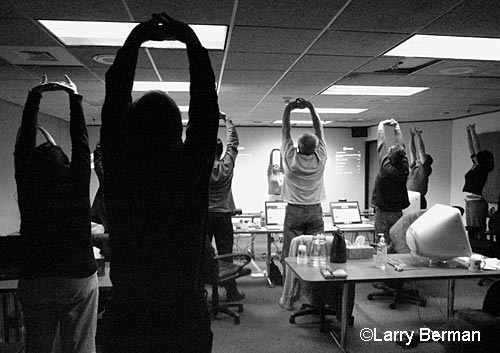
seventh inning stretch |
| Donate to
BermanGraphics |
| The new looser (or should I say loser) image format that ZAPP allows
has put artistís images at a disadvantage for projection jurying (see the
example image comparison below). Within the categories I observed, I saw a
few inconstancies of sizes of the projected images and a few artists that
had entire sets of images appear smaller than their competition. Iíve said
before that ZAPP is doing artists a disservice allowing them to upload
1400 pixel images into their ZAPP profiles because itís setting them up
for possible failure if applying to the shows that use projectors, which
most of the best shows do. The worst part of this potential fiasco is that
you don't see the projection size difference when choosing images to apply
with and then seeing them in the template at the bottom of your
application page, lined up as the jury will see them. |
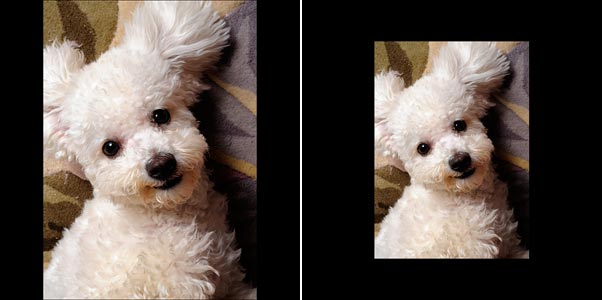
left - 1920 pixel image squared with 1920 black borders.
right - 1400 pixel image squared with 1920 black borders. |
|
art show
juror interviews and jury reviews |
|
Hire me
to Prepare your Digital Jury Images |








